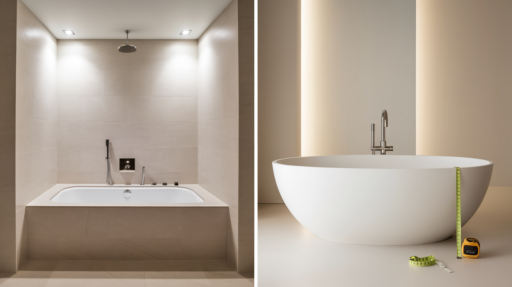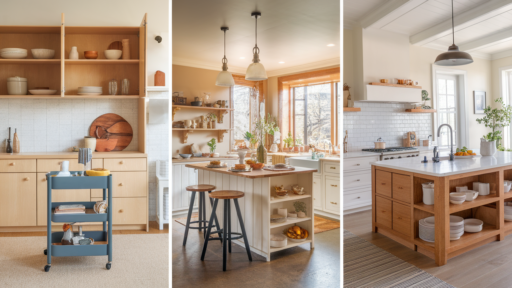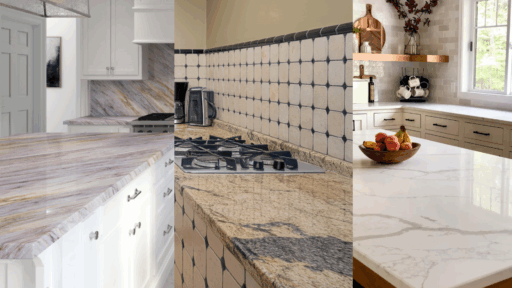Ever tried picking a bathtub and felt unsure about what size would actually fit your bathroom?
You’re not alone. It’s one of the first things people wonder about when planning a new bathroom or replacing an old tub.
I get it, you want something that works for your space without the guesswork.
That’s why this guide is here. I’ll help you determine the typical bathtub sizes, measure your space correctly, and recommend the type of tub that best suits your needs.
If your bathroom is small or has a bit more space, knowing the right size makes a significant difference.
You’ll also find answers to the most common questions people have about tubs.
So if you’re looking to avoid mistakes and make the right choice the first time, keep reading, I’ve kept everything simple and clear.
Why Picking the Right Bathtub Size Matters

Getting the right bathtub size is more important than it seems. If the tub is too big, it might not fit well or could make your bathroom feel crowded.
If it’s too small, it might not be comfortable to use. The right size helps you move around easily and makes cleaning simpler, too.
It also saves you money and time. A tub that fits your space well is easier to install and usually doesn’t need big changes to plumbing or walls.
Most of all, the right size makes bath time better, more relaxing, and easier to enjoy.
Standard Bathtub Dimensions
Bathtubs come in different styles and sizes. Below is a quick look at the most common types and their typical measurements to help you choose what fits best:
1. Alcove Bathtubs

Alcove bathtubs are the most common type found in homes.
They are designed to fit into a three-wall space, making them a smart choice for smaller bathrooms or renovations.
The typical size is about 60 inches long, 30 to 32 inches wide, and 14 to 16 inches deep. They often double as a shower, which adds to their practicality.
If your bathroom already has walls on three sides, an alcove tub is easy to install and makes the most of the space you have.
2. Freestanding Bathtubs

Freestanding tubs sit away from the wall and stand on their own. They work well in larger bathrooms where space isn’t tight.
These tubs usually range from 55 to 72 inches long, 27 to 32 inches wide, and 15 to 20 inches deep.
Some styles include clawfoot or modern sculpted designs. Because they aren’t attached to walls, they give you more placement options but may need extra plumbing work.
They also become a main feature in the room, adding a bold and clean look.
3. Drop-In Bathtubs

Drop-in bathtubs are installed into a framed deck or a custom surround. They give your bathroom a built-in look.
The typical size for these tubs is 60 inches long, 30 to 32 inches wide, and 16 to 20 inches deep. Because the frame hides the outside of the tub, you only see the top edge.
These tubs need more planning and space due to the extra frame. If you want storage around the tub or a wider edge to sit on, drop-ins are a good pick.
4. Corner Bathtubs

Corner bathtubs are shaped to fit into a bathroom corner, saving space and offering a unique look.
They usually measure 48 to 60 inches on each side, with different depth options depending on the model.
These tubs often come with a wider seating area and are good for two people. They’re ideal for small or oddly shaped bathrooms where a regular tub might not fit well.
Just keep in mind, they often take up more floor area even though they use a corner.
5. Soaking and Garden Tubs

Soaking and garden tubs are built for comfort and deeper water.
They range from 60 to 72 inches long, 32 to 42 inches wide, and 18 to 24 inches deep. These tubs are great if you enjoy long, relaxing baths.
Because they hold more water, they usually need stronger floor support and may take longer to fill.
They’re often placed in master bathrooms or spots where space and plumbing allow. If soaking and comfort are high on your list, these tubs are worth considering.
How to Choose the Right Bathtub Size for Your Bathroom
Choosing the right bathtub size isn’t just about what fits; it’s about how it works in your space. This is what to consider:
- Measure your space: Include the length, width, and doorways. A tub might fit in the room, but not through the door if it’s too wide.
- Think about comfort: If kids or older adults will use the tub, a lower height or built-in seat might be helpful.
- Consider multiple users: If more than one person will use the tub, a larger size may be better.
- Plumbing and installation: It’s easier and cheaper if the new tub fits the location of your old plumbing. Moving pipes adds extra cost and time.
Plan ahead to choose a tub that fits, feels comfortable, and complements your bathroom’s layout for years of use.
Tips for Picking the Best Bathtub Size
- Measure more than once: Double-check the length, width, and height of your space to avoid mistakes.
- Check your doorways: Make sure the tub can fit through your doors and halls during delivery.
- Think about who will use it: Choose a size that’s easy and safe for everyone in your home.
- Plan for space around the tub: Leave room to clean and move around the tub comfortably.
- Match the plumbing: It’s cheaper and easier if your new tub lines up with existing pipes.
- Don’t forget depth: A deeper tub is better for soaking, but it uses more water.
- Use painter’s tape: Mark the size on your bathroom floor to see how it feels before buying.
Conclusion
Choosing the right bathtub size doesn’t have to be confusing.
I know it can feel like a lot to think about space, comfort, and plumbing, but with a little planning, it gets much easier.
When you understand the common tub sizes and measure your bathroom the right way, you’re already on the right track.
A tub that’s too small might not be relaxing, and one that’s too big might take up more room than you can spare.
Take your time, check your space, and think about what works best for your home.
With the right size, your bathroom will not only look better, it’ll work better too. And that makes bath time something to enjoy, not just manage.
Frequently Asked Questions
Can I fit a standard tub in a small bathroom?
Yes, a standard alcove tub-about 60 inches long and 30 inches wide-can fit in many small bathrooms. Just measure your space and doorways carefully to be sure.
What’s the minimum space needed around a bathtub?
You should leave at least 4 to 6 inches of space on the sides and 18 inches of open space in front of the tub. This helps with cleaning, moving around, and getting in and out safely.
Are deeper tubs harder to install or maintain?
Deeper tubs, like soaking or garden tubs, may need stronger floor support and more water. They can take longer to install, but many people feel the comfort is worth it.
How do I measure for a replacement tub?
Use a tape measure to check your tub’s length, width, and depth. Measure the space it sits in, and make sure the new tub can fit through doorways and halls for delivery.








